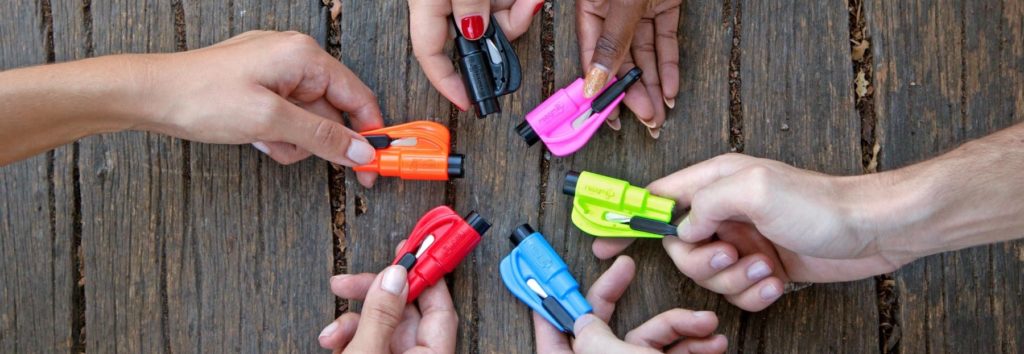By Guest Author: Paul Colley
Car crashes are one of the leading causes of death of people between the ages of 15 to 20 years in the U.S. According to the Centers for Disease Control and Prevention, car accidents cause 36 percent of “all deaths in this age group
A study conducted by the Children’s Hospital of Philadelphia and State Farm Insurance in April 2011 analyzed over 800 crashes that involved teen drivers. It found that 75 percent of accidents were caused by teen driver error.
Teens & Car Accidents: Causes & Consequences
The following three common errors account for almost half of these crashes:
- Teens failed to survey the road ahead to detect and/or respond to hazards
- Driving too fast
- They were distracted by items inside and outside of the car
It is no surprise that parents often hesitate to hand over the car keys to their teenagers. If you are letting your teenager drive, make sure they are aware of and follow safe driving techniques to keep themselves safe on the road. Every teen driver can be subject to legal proceedings for driving or speeding carelessly. The situation gets worse if it is a case of driving under the influence
U.S. laws related to driving under the influence are strict and many state laws have zero tolerance for minors and alcohol. For example, driving under the influence in Texas will delay your teen’s driving privileges for 180 days (minor offense) and up to 2 years in the case of second or subsequent offenses. In addition to the suspended driving privileges, there are significant fines and classes that must be taken in order to get back your driving privileges.
The punishment is more severe with second or subsequent offenses and would likely include additional fines, court costs, and legal fees. That would be the best case, because more often than not, if a third party is involved and has sustained an injury on the account of an inebriated teen’s reckless driving behavior, there will be the added headache of fighting a skilled Austin personal injury attorney who will be fighting hard to secure the rights and privileges of the victim in the case.
Safety Measures: Let Technology Save the Day
The good news is parents can now monitor how their teen is driving thanks to technological developments. You can prevent your teens from speeding, encourage them to ignore the distractions on the road, and better protect them from a car crash. There are many safety gadgets available today that can provide a safer experience for your teens behind the wheel, helping them avoid car crashes.
Here are a few gadgets worth considering.
Hyundai’s Blue Link System
The 2012 Hyundai Sonata, Veloster and Sonata Hybrid come with the Blue Link telematic system. It automatically calls for help if there is a crash. Better yet, Hyundai’s Blue Link System alerts parents if their teens engage in unsafe behavior when driving. It also allows parents to better control the movement of their teens. For example, the Geo-Fence feature allows you to set boundaries beyond which your teen driver cannot go with the car. You can also set exclusionary boundaries for areas you do want your teen driver to go.
Another feature highly touted by parents is the curfew alerts feature. You can set the alert if you don’t want your teenaged son/daughter to drive the car after 11 P.M or even midnight. If they do, you will be immediately notified by text message, a phone call or email. Last but not least, the Blue Link system allows you to set speed alerts. If your teen driver crosses a particular speed limit, the system will contact you.
This system reduces the chances of your teens engaging in risky behavior behind the wheel.
Ford’s MyKey System
Ford’s MyKey system is standard on most Lincoln and Ford models. Using a programmable key, this system allows parents to control the way their teenage son or daughter drives. You can use this key to set a speed limit as well as limit the stereo volume. Better yet, there is an option that allows you to keep the sound system from turning on unless everyone inside the car has fastened their seatbelts. A sound also chimes as soon as the car speed reaches 45, 55 and 65 mph.
In addition, the MyKey system comes with optional hands-free control for cell phones. It can even read text messages automatically to the driver or block them altogether.
SafeCell
This is a very useful Android and iPhone app that helps you keep your teen driver safe behind the wheel. Using the GPS of the driver’s phone, this app determines the prevailing local text message and hands-free laws, and also alerts your teen drivers so they can comply. The best part of this app is that it not only reminds your teen drivers not to text, but also rewards them for following safe driving techniques.
Your teen driver can start earning rewards after 500 miles of safe driving. Rewards are given in forms of points, which can be translated into $5 worth of gift cards at various leading retailers such as Macy’s and Amazon.
Mercedes-Benz mbrace2
This system from Mercedes-Benz is available in all 2013 model-year cars. Common features include speeding alerts and geo-fencing to give parents better control of the way their teens drive. It also comes with a “breadcrumbs” feature known as a Driving Journal. It tracks the records of where and how your car has been driven.
Mercedes-Benz mbrace2 allows you to generate a travel history that appears on an online map. Using the geo-fencing feature, parents can set up 15 geographical locations where their teens are not allowed to take the car.
Conclusion
These safety gadgets come in handy in the time of need. Teen drivers are prone to accidents and gifting your son or daughter a safety device can help him or her stay safe. Installing a safety device or an app is not enough; you also need to set rules and work collaboratively with your teens. Working with your teen and using the necessary safety gadgets will go a long way in helping him or her become a safer driver.
Author Bio:
Paul Colley is an attorney at Colley & Colley, LLP based in Austin, Texas. With his expertise in handling personal injury cases, Paul has recovered more than $50 million for clients and helped personal injury victims fight for their rights.


